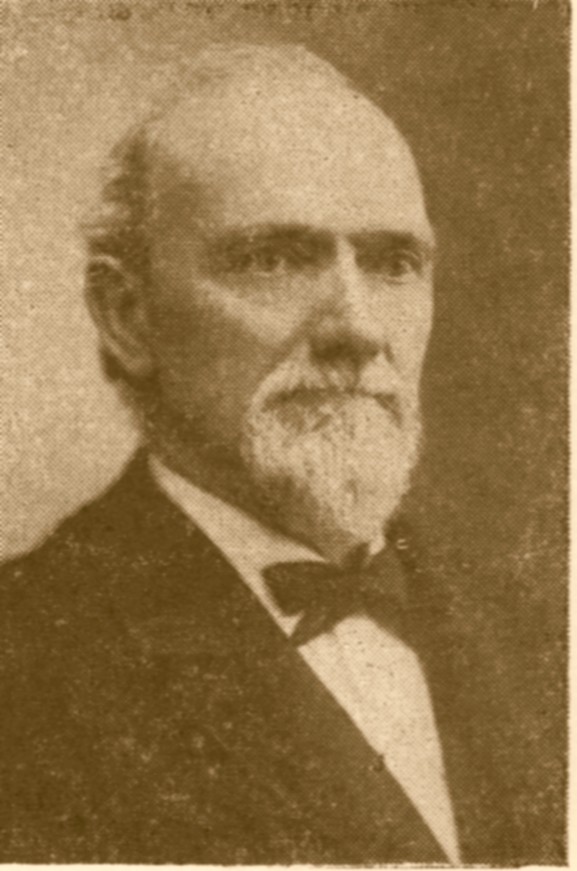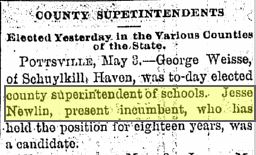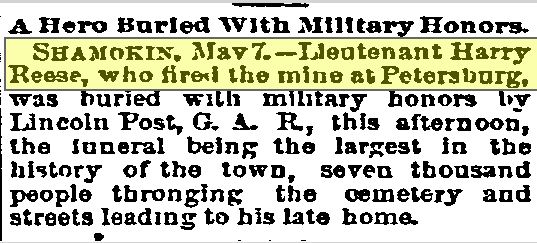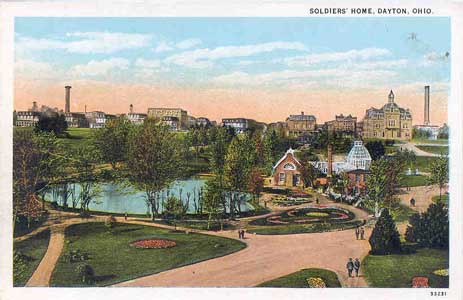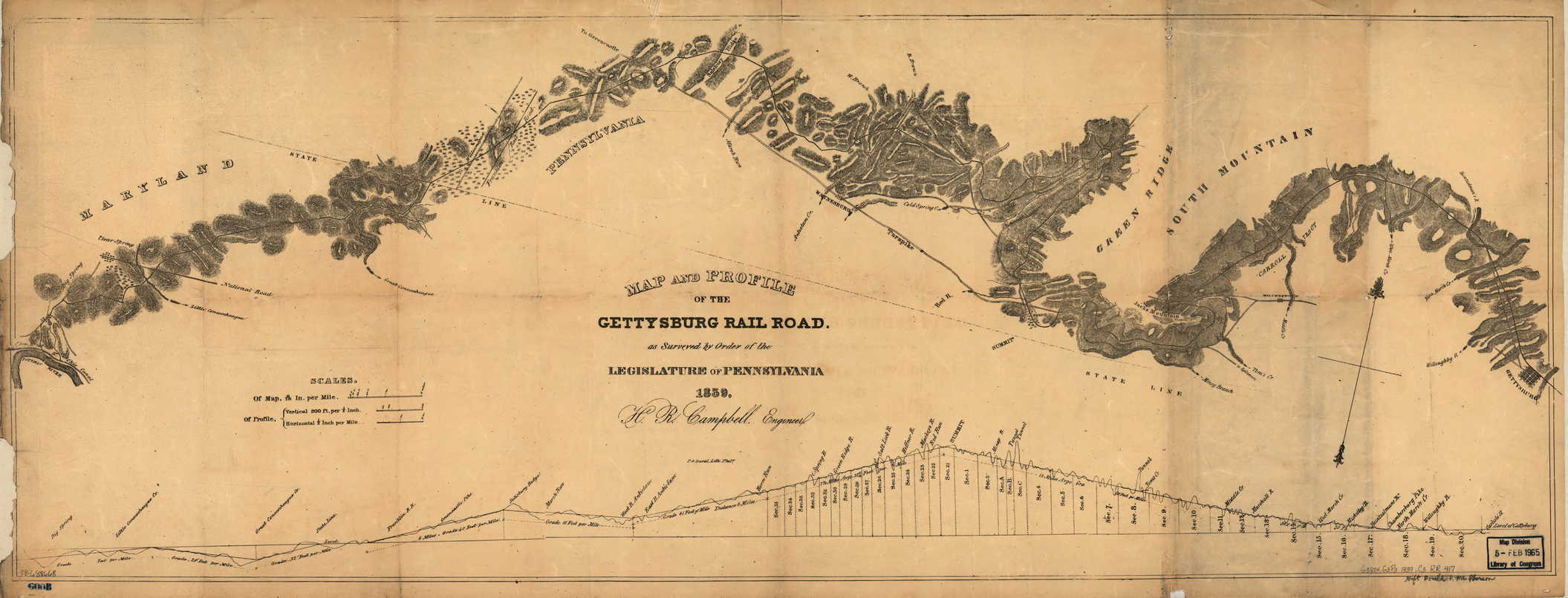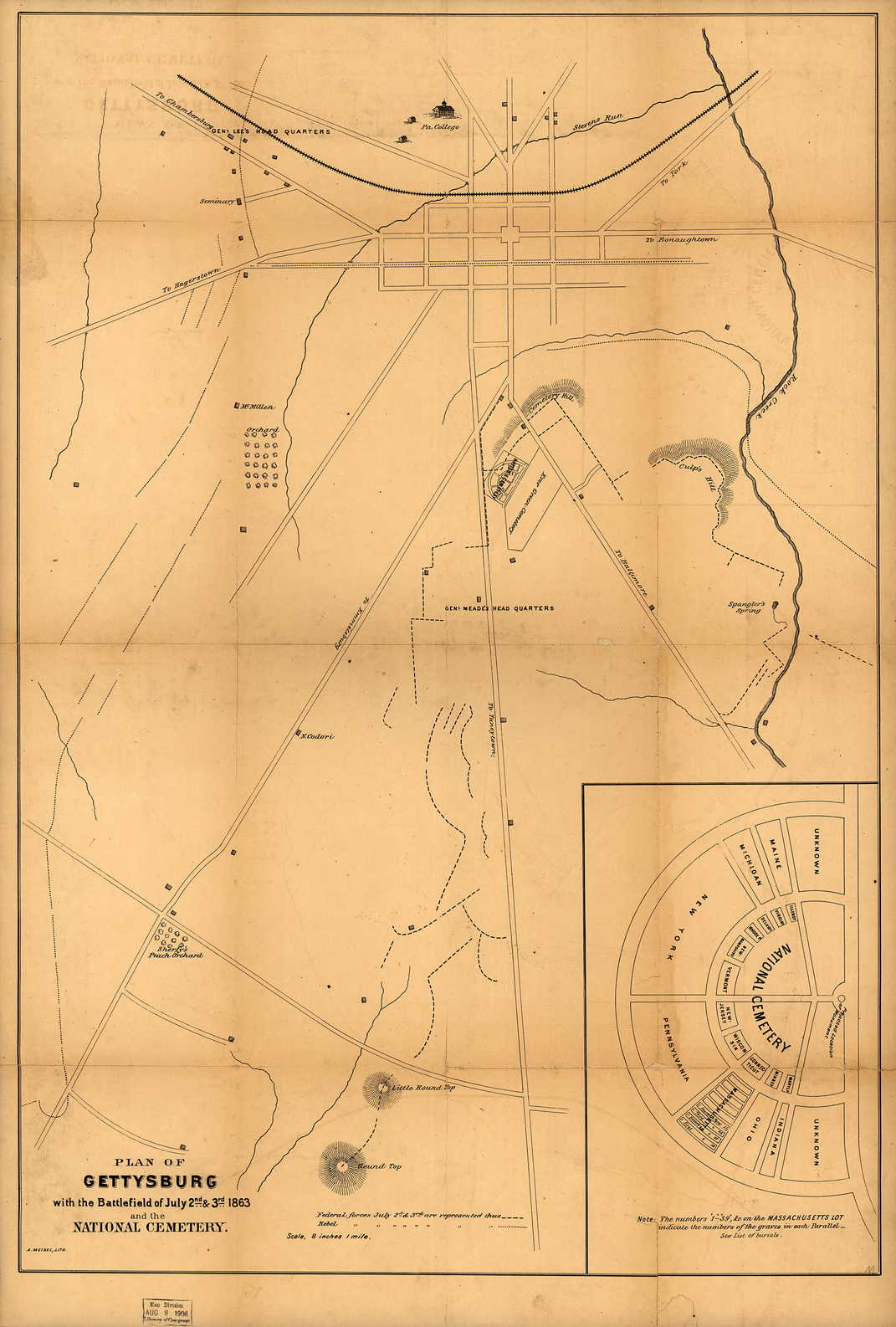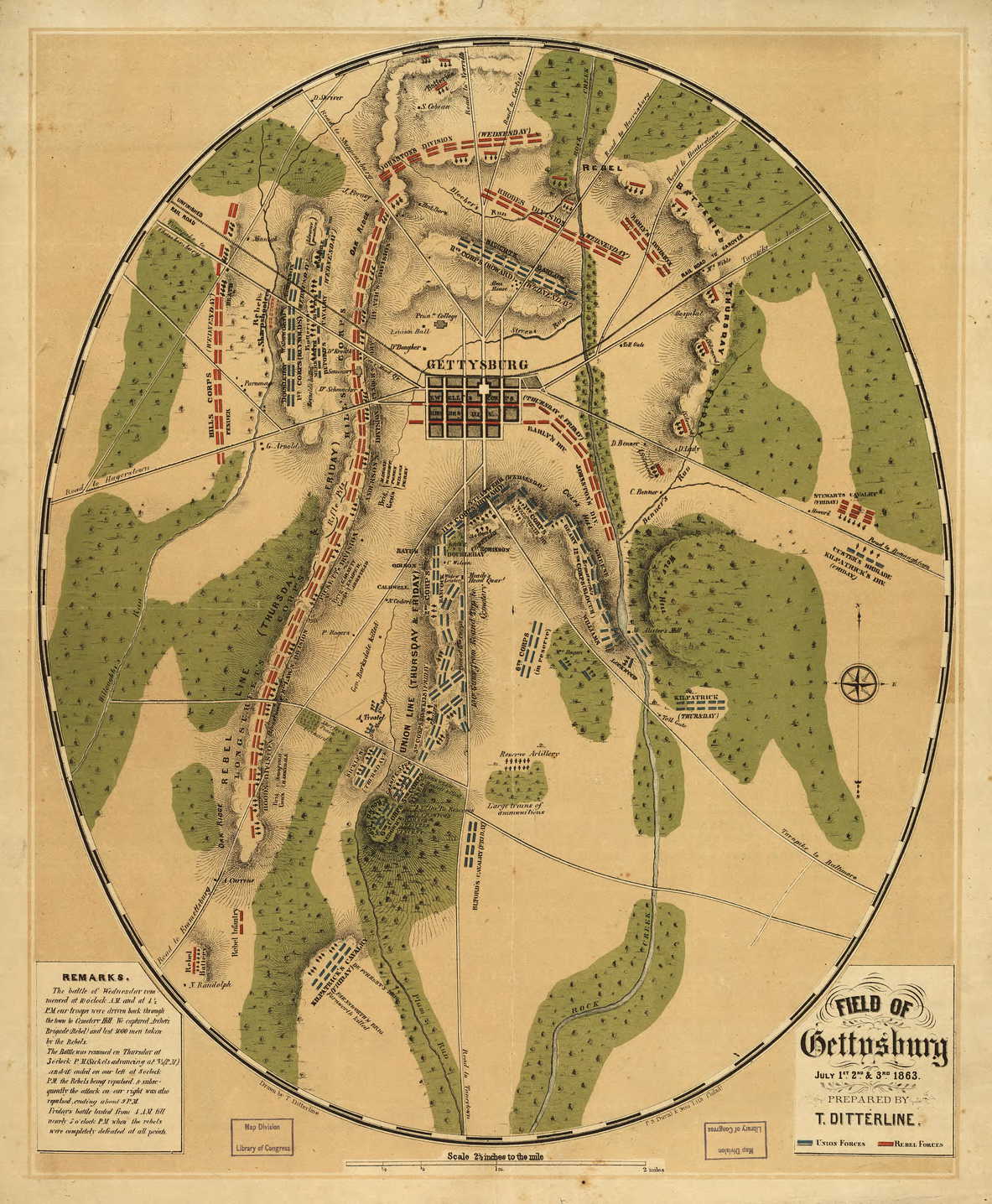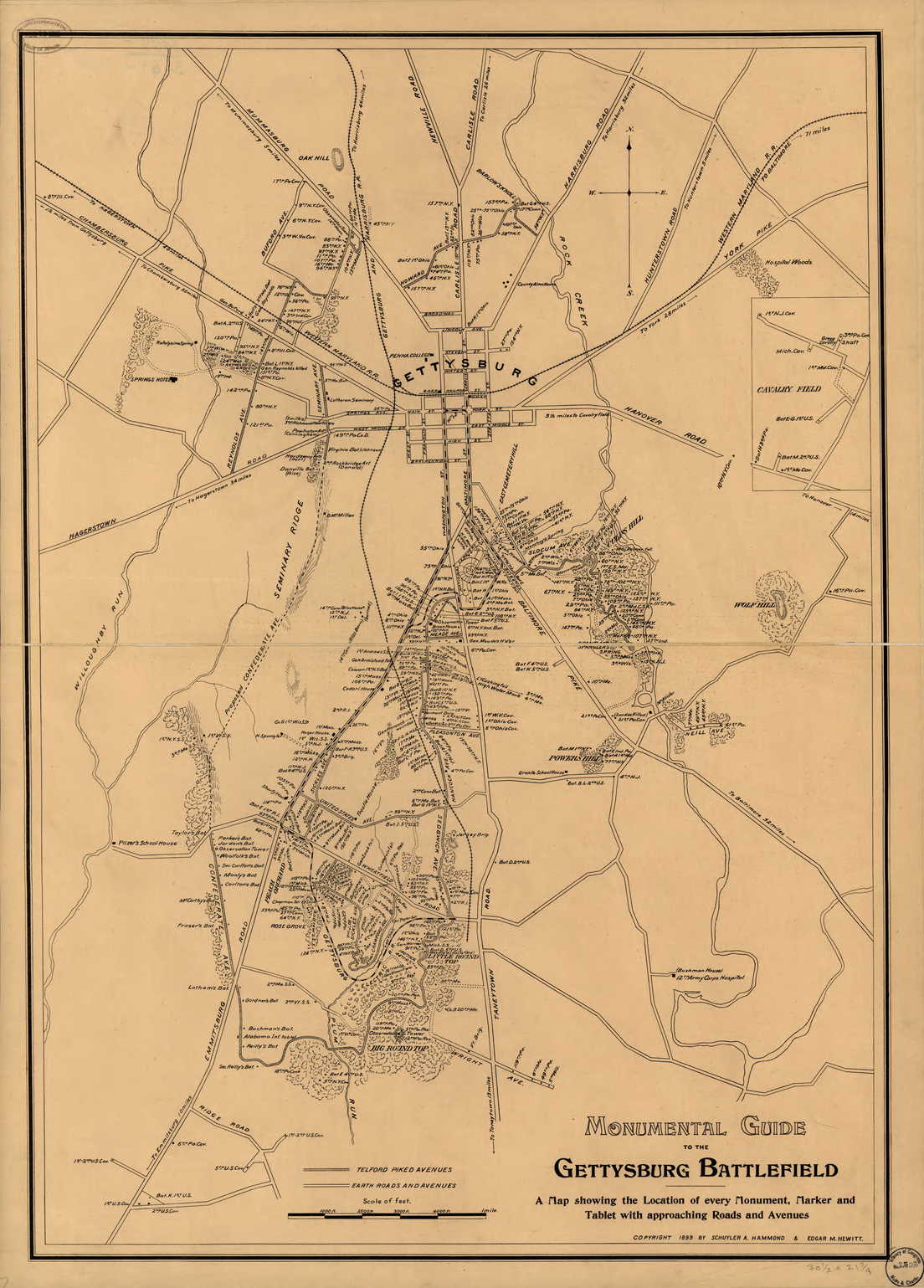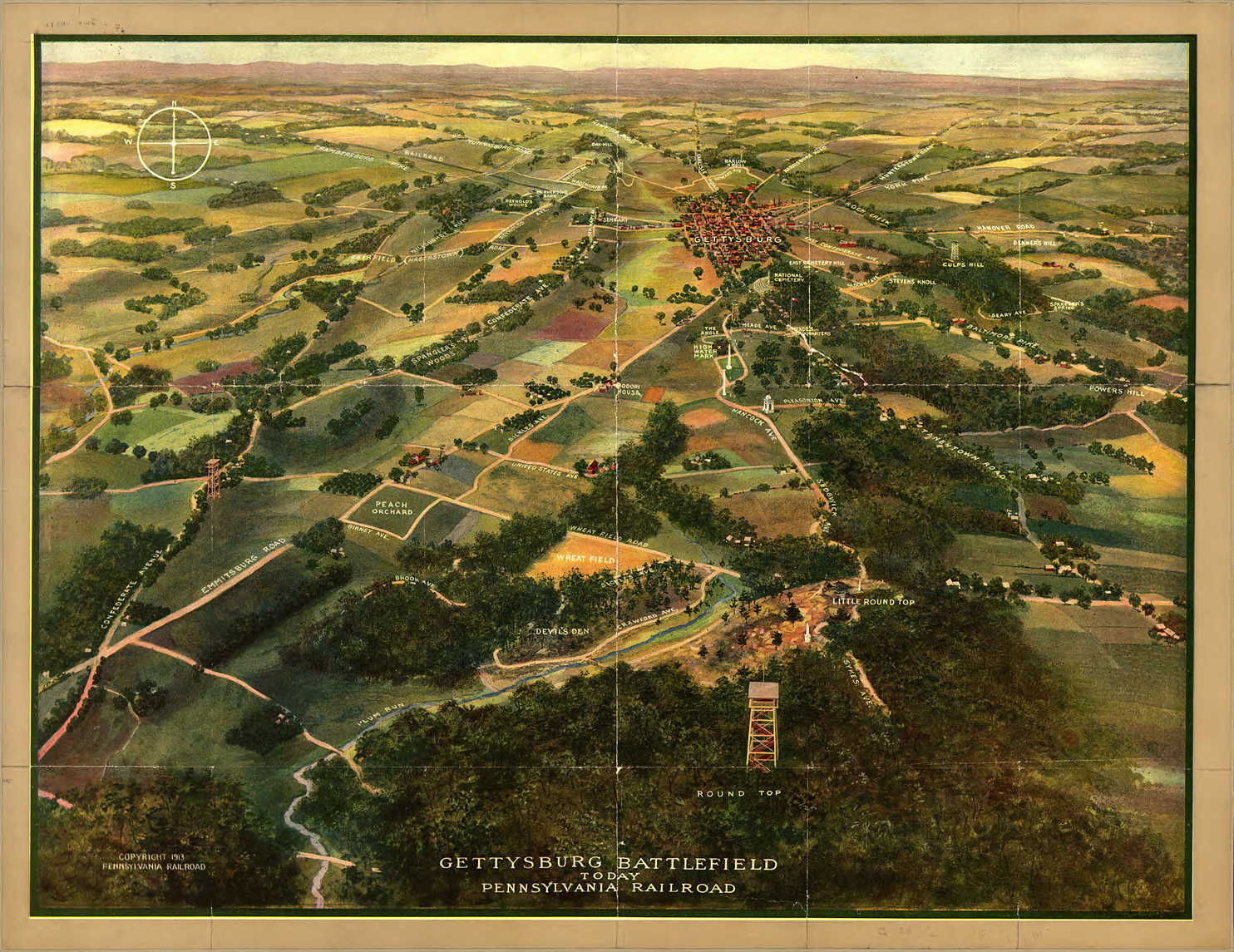Jesse Newlin of Tremont and English as a Second Language During the Civil War
Posted By Norman Gasbarro on April 12, 2013
Jesse Newlin served for eighteen years as Superintendent of Schools of Schuylkill County, Pennsylvania. He began his service in 1863, during the Civil War, and concluded his service in 1881, when he was defeated for re-election by George Weiss of Schuylkill Haven. In 1864, he presented his first annual report on the condition and progress of the Schuylkill County Schools. The following excerpt was re-published in several later annual reports including an anniversary edition of the county school directory of 1954, which provided an historical review of position of County Superintendent which had been established in 1854:
Schools – The directors of Blythe Township graded their schools in New Philadelphia, making in the county, 103 graded schools. Fifteen boroughs and seven school districts have a rigid system of graduation, by which the pupils are promoted from one department to a higher, after a careful examination by the directors or principal teacher. All the other schools of the county are well classified, except those of four districts, in which directors have not adopted a regular series of textbooks. These however have been classified as well as circumstances would permit. There are no schools wholly unclassified but there are several in which geography and grammar have not been introduced.
These are generally, in agricultural districts, in which a large majority of the children speak the German language language, and do not understand a single word of English, the language in which they are required to study. They read English books, recite English arithmetic and write English script, yet do not understand scarcely a single word they read, recite or write. I have not urged the study of these branches in such schools, and even in some where I found the teachers attempting to teach them, I suggested that they drop them for the present and spend time in teaching their pupils the English language. For the accomplishment of this, I have recommended a careful perusal of the able report of the County Superintendent of Berks County, on the subject of teaching German children the English language, found in the September number of the Pennsylvania School Journal for 1863. I, at the same time, recommended the employment of teachers familiar with the German language.
So long as the absurd system of teaching the English, only, is pursued, it is utterly impossible to conceive how anything like reasonable progress can be made in these districts. Not a small portion of the opposition to the school system, still lingering in these districts, is attributable to this very cause. The time has come when these things should not be, and hereafter steps will be taken towards improving this faulty system of teaching.
What is particularly noteworthy about the 1864 report is the position Jesse Newlin took on the teaching of students who came to school with little or no English background. These students included those whose families had been in America for more than 100 years and spoke in the Pennsylvania Dutch dialect – the language of their parents and the communities in which they lived – as well as the newly arriving German immigrants who helped to supply a needed labor force in the mines. In the portion of the report that was reproduced in 1954, no mention was made of the ongoing Civil War, but it is hard to imagine that in the full report that Newlin avoided the fact that it was occurring.
For the immigrants in the rural districts of Schuylkill County who were required to be taught in English, Newlin proposed that the teachers instead concentrate on first teaching the students English – and temporarily drop the attempts to force them to read and write in a language (English) in which they had no comprehension. Newlin’s proposal was not new, but was moving in the direction of other counties, including neighboring Berks County which had reported on the practice in the prior year. This partially dispels the myth that somehow, immigrant children learned English without formal instruction by the schools – an assumption made today by critics of school instructional programs such as “English as a Second Language (ESL).”
In the early years, the County Superintendent’s position was an elected on as evidenced by the following brief story which appeared in the Harrisburg Patriot on 8 May 1878:
Pottsville, Pennsylvania, 7 May 1878 – Jesse Newlin, County Superintendent, was to-day re-elected to that office for a term of three years by a large majority. The salary was fixed at $2,000 per annum and the convention adjourned.
But in 1881, the Patriot reported the end of Newlin’s tenure as County Superintendent with the following story:
COUNTY SUPETENDENTS [sic]
Elected Yesterday in the Various Counties of the State
POTTSVILLE, 3 May 1881 – George Weisse, of Schuylkill Haven, was to-day elected County Superintendent of Schools. Jesse Newlin, present incumbent, who has held the position for eighteen years, was a candidate.
Following his defeat, Jesse Newlin remained in the field of education and resumed a teaching career that would last until his death in 1911. In his obituary, it was erroneously stated that he had held the position of County Superintendent for 24 years:
PROFESSOR NEWLIN DEAD
Special to the Inquirer
POTTSVILLE, Pennsylvania, 15 June 1911 – Prof. Jesse Newlin, for twenty-four years Superintendent of Public Instruction in Schuylkill County, died suddenly today of heart disease. He was aged 73, and nestor of educational affairs in this part of the State. A son, William J. Newlin, holds the chair in psychology at Amherst College, Massachusetts, and a daughter, Miss Esther Newlin, is Superintendent of Public Instruction at Los Angeles, California.
Not mentioned in the obituary were two facts that have importance to the Civil War Research Project. The first is that in 1860, Jesse Newlin is found in the 1860 Census for Tremont, Schuylkill County, and the second is that he had Civil War service. In the Emergency Force of 1862, Jesse Newlin served in the 4th Pennsylvania Infantry, Company F, as a Corporal, from 11 September 1862 to his discharge at the end of the emergency on 25 September 1862. Because of his residence in Tremont and Civil War service, he qualifies for inclusion in the list of Civil War Veterans and will be added in the next update.
Newlin’s Veterans’ File Card from the Pennsylvania Archives states that he was 24 years old at the time of his enrollment, that he stood 5′ 7″ tall, had light hair, a light complexion, and light-colored eyes. His residence at the time was Port Carbon, Schuylkill County, and his occupation was school teacher.
After his enrollment and service, when required to register for the draft in 1863, he did so twice – both times stating his occupation as teacher – and indicating he was, at the time, a single, white male.
It is not known at this time why Jesse Newlin was defeated for re-election in 1881, but what is noteworthy about his career after his superintendency must be mentioned: he resumed his teaching career and remained as a teacher in the Pottsville schools almost to the time of his death – and surely inspired two of his children to pursue careers in public education as well!
——————————
The portrait of Jesse Newlin is from the 1954 directory of the Schuylkill County Schools. News clippings are from the on-line resources of the Free Library of Philadelphia.
 ;
;
